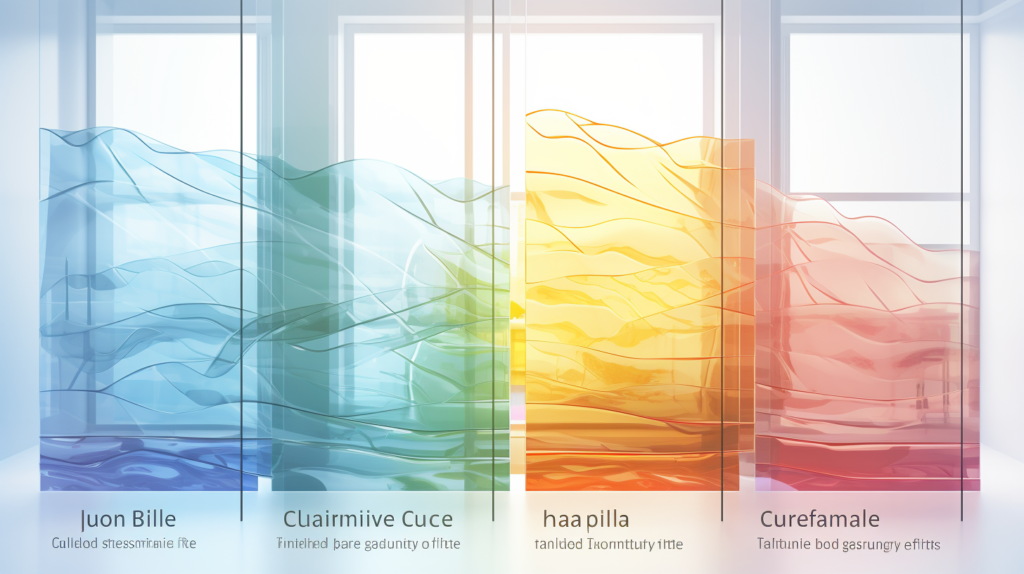The layered construction of laminated glass seems like it should block noise, but just how soundproof is it really?
While laminated glass provides some sound dampening, it cannot completely block noise on its own. True acoustic isolation requires other specialized technologies.
Let’s dive in to understand the acoustic limitations of laminated glass and what factors affect its noise reduction performance.
What is Laminated Glass?

Laminated glass is a type of safety glass that is commonly used in architectural applications and in the automotive industry.
It is made up of two or more sheets of glass that are bonded together by a plastic interlayer, typically made of polyvinyl butyral (PVB) or resin.
The interlayer holds the layers of glass together and provides several benefits compared to regular annealed glass.
The plastic interlayer makes laminated glass more impact resistant and helps hold the shards together when the glass breaks, reducing the risk of injury.
This prevents the glass from shattering into dangerous jagged pieces and makes it safer for uses in car windshields, building windows, and other applications where impact resistance is important.
The interlayer also provides other advantages like filtering out UV rays and adding strength to the overall glass structure.
Laminated glass is sometimes referred to as safety glass for these reasons. It was originally developed for early windshield designs in automobiles in the 1930s.
Since then, it has become commonly used in many architectural applications like storefronts, building facades, stair railings, and any application where tempered glass cannot be used due to size limitations or curvature needs.
The plastic interlayer and lamination process makes the glass more versatile for handling, shaping, and installation compared to annealed or tempered glass.
Overall, laminated glass is an excellent choice when safety, security, and strength are important factors.
The plastic interlayer lends itself to flexibility in application while also providing critical resistance to breakage and penetration.
This had led to widespread adoption of laminated glass in vehicles and buildings where protecting people from laceration or falling from the shattered glass is a priority.
Is Laminated Glass Soundproof?

When choosing glass for windows, doors, or partitions, sound transmission may be an important factor to consider along with other performance attributes.
With its layered construction, laminated glass provides some level of sound dampening. However, it is not completely soundproof.
There are several factors that determine the acoustic performance of laminated glass.
Laminated Glass Is Not Completely Soundproof
While laminated glass is good at absorbing impact and preventing shattering, it is not as effective at blocking sound transmission as some other technologies like double or triple pane glass assemblies.
The plastic interlayer in laminated glass does provide some dampening of noise, but it does not completely stop sound waves from passing through, especially higher frequency sounds.
Compared to single pane annealed glass, laminated glass can reduce sound transmission by 1-3 decibels (dB). This is because the interlayer creates a damping effect that dissipates some of the sound energy.
However, this level of noise reduction is modest compared to other options. Frequencies above 500 Hz can readily transmit through laminated glass, while lower frequency sounds are dampened slightly more effectively.
Overall, laminated glass is better than having no barrier at all, but it cannot make a partition completely soundproof.
For full soundproofing, other technologies like double pane or triple pane glass with optimal air gaps, thicker glass, improved framing seals, and specialized acoustic interlayers have to be incorporated.
Laminated glass by itself acts more as a sound dampener rather than a total sound barrier. It is an incremental improvement over single pane glass, but does not achieve anywhere close to total sound transmission loss that true soundproofing requires.
What Are The Factors Affecting Sound Dampening

There are a few factors that impact the degree of sound dampening that a laminated glass assembly can provide:
The thickness – Increasing the thickness of the glass adds mass which helps improve sound insulation.
Having thicker individual glass layers along with a thicker interlayer can significantly improve acoustic performance.
The type of interlayer – The material properties of the interlayer also affect sound dampening.
Polyvinyl butyral (PVB) is the most common, but specialized acoustic PVB or resin layers are engineered to dampen sound more effectively.
Air gaps – Laminated glass that incorporates small air gaps between the layers sees better sound insulation than laminated glass without gaps. The air space acts as another damping layer.
The frequency – The frequency of the sound impacts transmission loss.
Lower frequencies around 100-300 Hz are more effectively reduced by laminated glass while higher pitched sounds at 1,000 Hz or more readily transmit through.
Optimizing these variables results in better sound dampening, but no combination allows laminated glass alone to achieve anywhere close to total soundproofing.
It helps reduce noise but does not eliminate it. Additional sound blocking or absorption has to be added for full acoustic isolation.
What Are The Performance Differences

To understand the acoustic performance limitations of laminated glass, it helps to compare it to other sound insulating technologies:
Single pane glass provides almost no reduction in sound transmission, only blocking 1-2 dB. Any loud noises easily penetrate through.
Laminated glass, as described earlier, blocks around 1-3 dB more sound than single pane depending on the thickness and construction.
This reduces noise slightly but does not provide meaningful soundproofing.
Air-spaced double pane glass without specialized acoustic interlayers can block about 6-12 dB more sound transmission than single pane glass.
This starts to provide noticeable sound dampening for medium loud noises like traffic.
Triple pane glass, depending on the air gaps used, can block 18-27 dB more sound than single pane. This achieves effective dampening of loud noises like urban street traffic.
Wider air gaps improve performance.
Well-engineered acoustic glass assemblies with double or triple thick panes, improved air gaps, and specialized interlayers can block 35-45+ dB of sound transmission, achieving near full soundproofing.
As the stats show, laminated glass by itself falls far short of true soundproofing capabilities.
It marginally improves over single pane glass, while Double and triple pane constructions offer far better noise blocking if needed.
Laminated glass reduces sound transmission slightly, but it cannot make a partition fully soundproof on its own.
When Is Laminated Glass Sufficient?

While laminated glass does not provide anywhere close to full soundproofing, the modest noise reduction it does provide can be useful in many contexts:
Schools and office partitions where some sound absorption is desired but full acoustic isolation not needed. Reducing noise distraction and transmission improves learning/work environments.
Interior windows or interior glass walls/doors where exterior noise sources like traffic are not a factor. Dampening inter-room noises improves privacy.
Vehicles and transportation where more extensive soundproofing solutions are impractical. The sound dampening balances costs.
Outdoor glass balcony/ledge barriers where an incremental reduction in transmitted sounds from the street, railway, or airport has benefit.
Glass flooring or stairs where impact sound through the glass needs to be minimized for occupants below. The dampening reduces foot fall noise.
Athletic facilities and spectator boxes/berms where cheers and shouts passing through glass needs to be reduced but complete blocking is unnecessary. Some cheering sound transmission maintains energy.
In these types of applications, the modest sound dampening provided by laminated glass is sufficient for the needs, while also benefiting from laminated’s safety properties.
The noise reduction improves the environment while the cost stays reasonable compared to true acoustically rated products.
The applications call for some mitigation of sound transmission, but not total soundproofing capabilities.
Conclusion
Laminated glass provides significant safety and security advantages through its impact resistance and ability to hold shards together when broken.
It also offers some level of sound dampening by dissipating acoustic energy through the plastic interlayer.
However, laminated glass is not soundproof. It only marginally reduces noise transmission compared to single pane glass, while double and triple pane constructions with air gaps provide far superior sound blocking.
For full soundproofing, laminated glass has to be combined with other technologies like specialized interlayers, improved seals, optimal air gaps, and increased mass.
On its own, it falls well short of the performance needed to achieve true acoustic isolation.
But for applications where the safety benefits are needed and only moderate sound dampening is required, laminated glass can be a good option.
